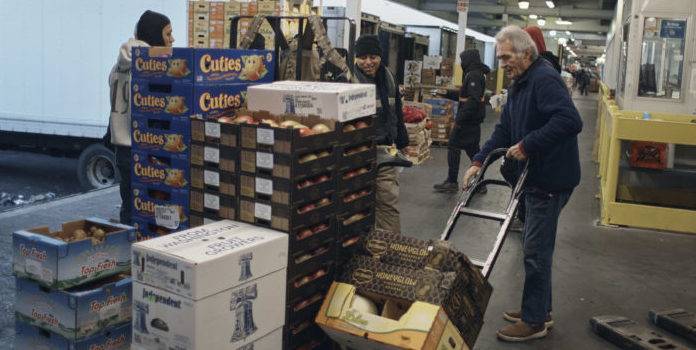(Headline USA) A high-profile report on inflation to be released Tuesday morning was expected to show that the numbers continue to be more than three times what it was, on average, during the Trump administration, despite an aggressive—and economically risky—gambit by the Federal Reserve to bring it back down.
Economists have forecast that consumer prices rose 7.3% in November compared with a year ago, according to the data provider FactSet. By contrast, the yearly average during former President Donald Trump’s tenure was 1.9%, with the number having reached its lowest in 2020, his final year in office, even as the coronavirus pandemic wreaked havoc on the U.S. economy.
Biden apologists have attempted to excuse the stunning policy failures by claiming Trump, the pandemic and Russia were all to blame, even while claiming that the inflation was transitory.
On Tuesday, they sought to move the goalposts by suggesting that the new rate was actually a positive sign. Though still uncomfortably high, it well below a recent peak of 9.1% in June and would amount to the fifth straight year-over-year slowdown in inflation since the Fed’s whiplash-inducing hike in interest rates risked adding a recession to the existing economic woes.
Spin doctors continued to point to a decline in gas prices, which have been artificially buoyed by Biden’s decision to tap into the Strategic Emergency Reserves that Trump had replenished during his presidency.
Fed officials and economists will focus more on Tuesday’s month-to-month inflation figures for a better read on where prices might be headed. Prices are expected to have risen 0.3% from October to November, which Democrats tout as a streak of “slowdowns” when compared with their previous rate of growth.
Measured month to month, inflation had soared 1% in May and 1.3% in June but has averaged just 0.2% over the past four months, meaning that prices are continuing to rise at unacceptable levels, but less so.
Inflation remains far above the central bank’s annual 2% target and might not reach it until 2024.
Fed Chair Jerome Powell has said he is tracking price trends in three different categories to best understand the likely path of inflation: Goods, excluding volatile food and energy costs; housing, which includes rents and the cost of homeownership; and services excluding housing, such as auto insurance, pet services and education.
In a speech two weeks ago in Washington, Powell noted that there had been some progress in easing inflation in goods and housing but not so in most services. Physical goods like used cars, furniture, clothing and appliances have become steadily less expensive since the summer.
Used car prices, which had skyrocketed 45% in June 2021 compared with a year earlier, have fallen for most of this year. In October, their year-over-year price increase was just 2%.
Housing costs, which make up nearly a third of the consumer price index, are still rising. But real-time measures of apartment rents and home prices are starting to drop after having posted sizzling price acceleration at the height of the pandemic. Powell said those declines will likely emerge in government data next year and should help reduce overall inflation.
Still, services costs are likely to stay persistently high, Powell suggested. In part, that’s because sharp increases in wages—which Biden actively advocated, telling employers to “pay them more”—are becoming a key contributor to inflation.
“Pay them more.”
— President Biden whispers in response to questions about worker shortages. pic.twitter.com/8OtMvzizFT
— The Recount (@therecount) June 24, 2021
Services companies, like hotels and restaurants, are particularly labor-intensive. And with average wages growing at a brisk 5%-6% a year, price pressures keep building in that sector of the economy.
Services businesses tend to pass on some of their higher labor costs to their customers by charging more, thereby perpetuating inflation. Higher pay also fuels more consumer spending, which allows companies to raise prices.
“We want wages to go up strongly,” Powell said, “but they’ve got to go up at a level that is consistent with 2% inflation over time.”
On Wednesday, the Fed will likely raise rates for a seventh time this year, a move that will further increase borrowing costs for consumers and businesses.
Still, the central bank is expected to raise its key short-term rate by a smaller half-point, after four straight three-quarter-point increases. That would leave its benchmark rate in a range of 3.75% to 4%, its highest level in 15 years.
Economists expect the Fed to further slow its rate hikes next year, with quarter-point increases in February and March if inflation remains relatively subdued.
Adapted from reporting by the Associated Press

